Designed by Paul Smith 2006. This website is copyrighted by law.
Material contained herewith may not be used without the prior written permission of FAUNA Paraguay.
Material on this page was provided by Paul Smith, Alberto Esquivel and Arne Lesterhuis and is used with their permission.

SPOTTED NOTHURA Nothura maculosa
The most commonly encountered of the Paraguayan tinamous, this is an open-country species that remains widespread even in inhabited and agricultural areas. Despite their large size adults have cryptic colouration that enables them to crouch and remain almost invisible in grassy areas, then, when you are about to step on them, they burst into flight with a loud whirring of their wings before touching down a safe distance away.
Much debate exists surrounding the Chaco form of this species, considered by some (including the SACC) to be a separate species the Chaco Nothura Nothura chacoensis. Specimens of "chacoensis" from Argentina have since been proved to be indistinguishable from maculosa, and so the "species" has been called a Paraguayan endemic. Our field observations of what we assume to be Chaco Nothuras in the Dry Chaco area do not show any notable differences from typical maculosa either in appearance or voice. There is some suspicion that Chaco birds are smaller, but this is not a characteristic mentioned in the description of Nothura chacoensis. Given the confusion over what chacoensis is, the fact that it is apparently unidentifiable in the field, and the revised identity of Argentinian chacoensis, we prefer not to recognise chacoensis as a valid species until a thorough review of the specimens has been performed.
Click on the images to enlarge them.
FIGURE 1 - (FPAVE73PH) Adult lateral view ssp chacoensis presumably, Estancia Cachiveo, Departamento Presidente Hayes (Arne Lesterhuis September).
FIGURE 2 - (FPAVE74PH) Same individual ventral view (Arne Lesterhuis September).
FIGURE 3 - (FPAVE75PH) Adult ssp chacoensis presumably, near Lolita, Departamento Presidente Hayes (Paul Smith October 2007).
FIGURE 4 - (FPAVE76PH) Same individual dorsal view (Paul Smith October 2007).
FIGURE 5 - (FPAVE77PH) Adult ssp chacoensis presumably camouflaged in grass, near Lolita, Departamento Presidente Hayes (Paul Smith October 2007).
FIGURE 6 - (FPAVE78PH) Chick ssp. paludivaga presumably, Estancia Kanguery PN San Rafael (Alberto Esquivel November 2006).
FIGURE 7 - (FPAVE3174PH) Chick, location unknown (Arne Lesterhuis undated).
VIDEO A - (FPAVE79VI) Same individual as (FPAVE75PH - FPAVE76PH) (Paul Smith October 2007).
VIDEO B - (FPAVE80VI) Adult chacoensis with Dora the Explorer sound track (my ringtone!), near Loma Plata, Cuenca de Upper Yacaré Sur (Paul Smith September 2010).
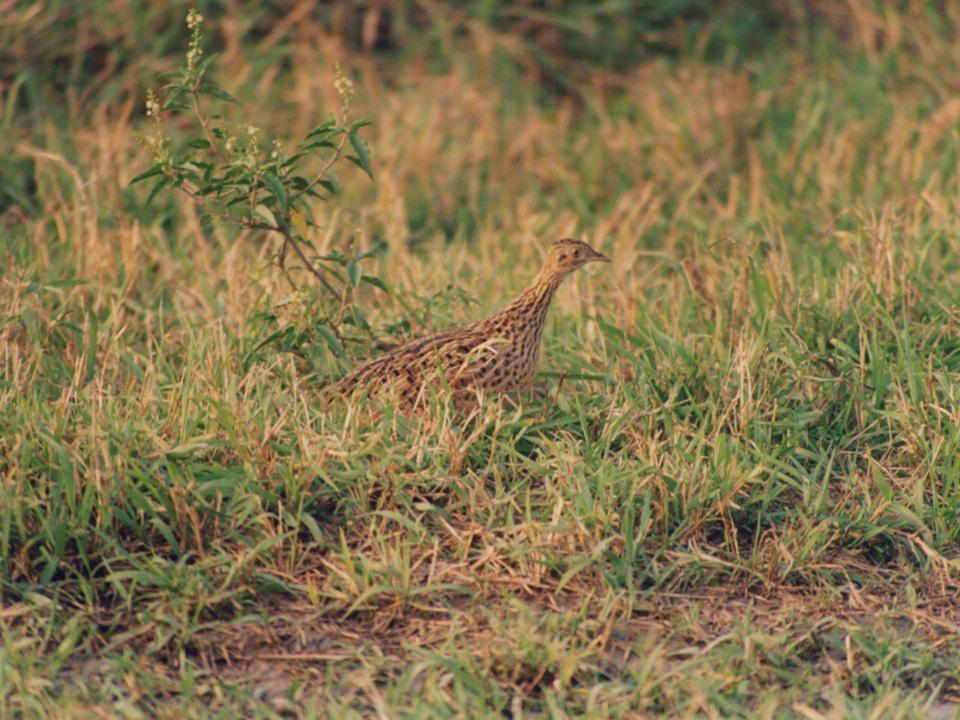
|
|
FIGURE 1
|
|
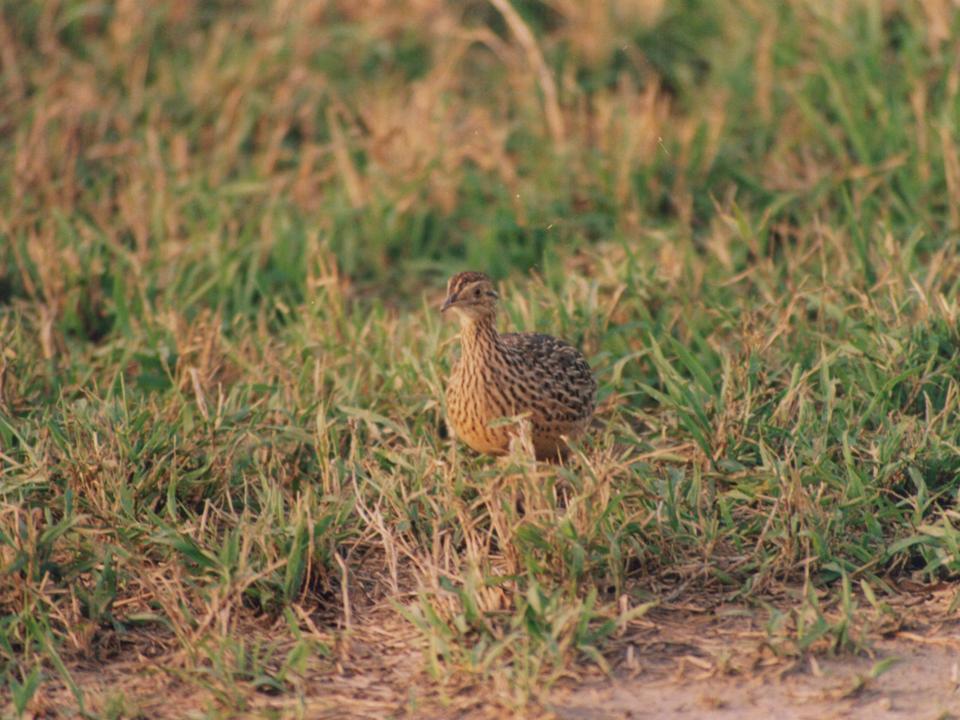
|
|
FIGURE 2
|
|
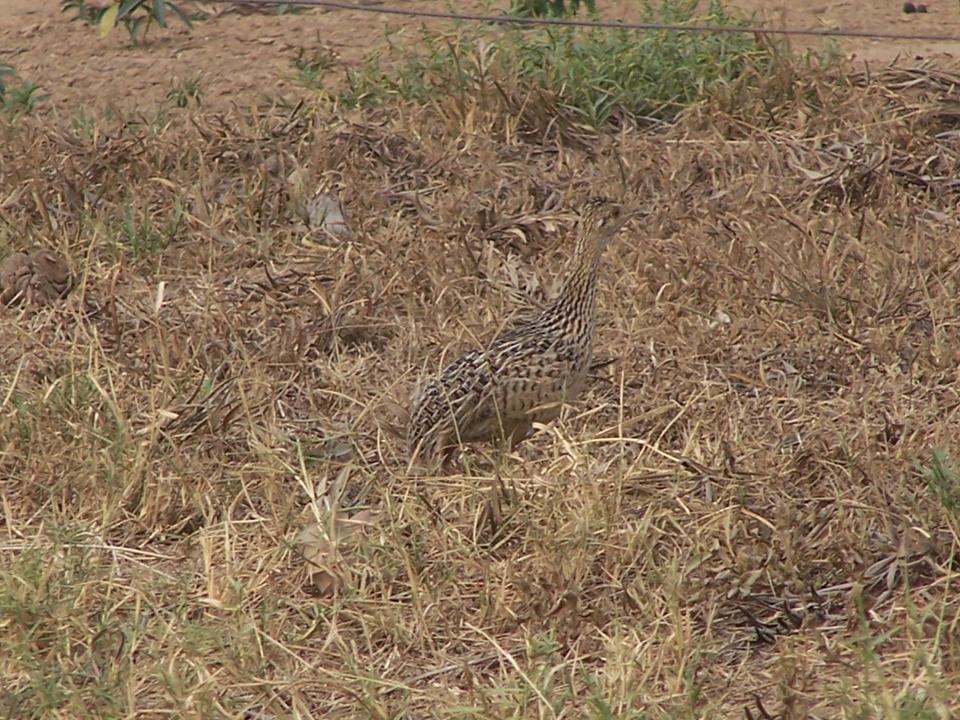
|
|
FIGURE 3
|
|
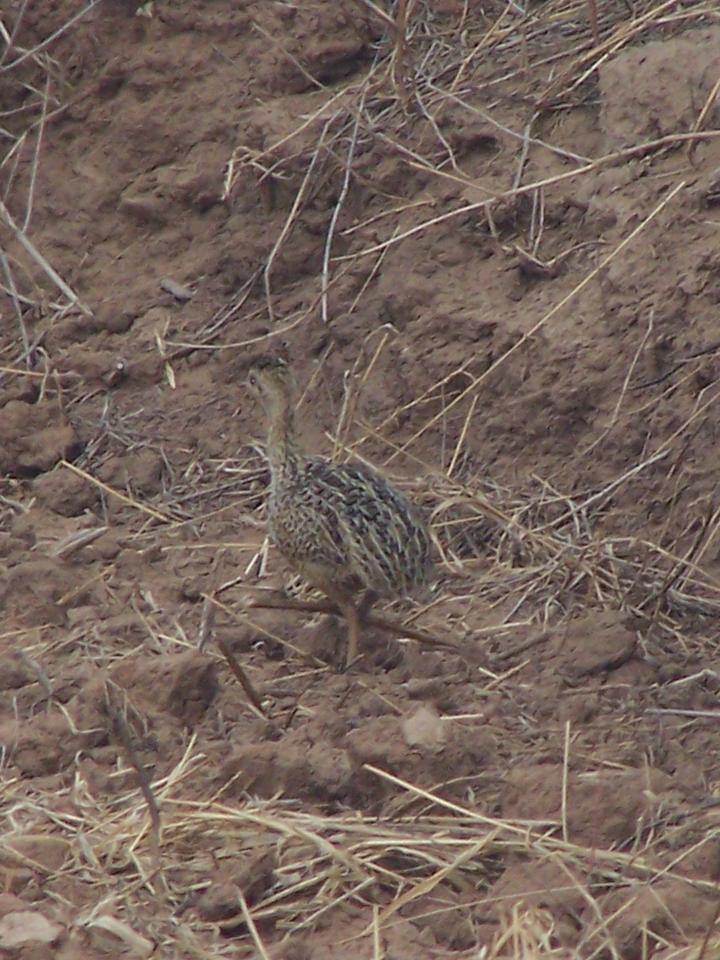
|
|
FIGURE 4
|
|
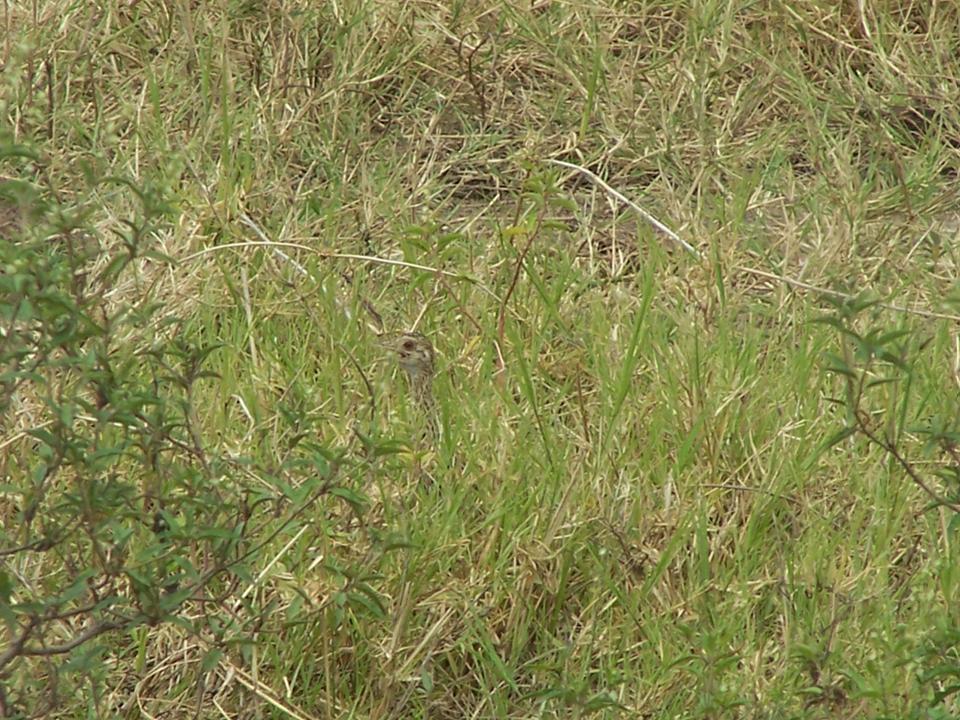
|
|
FIGURE 5
|
|
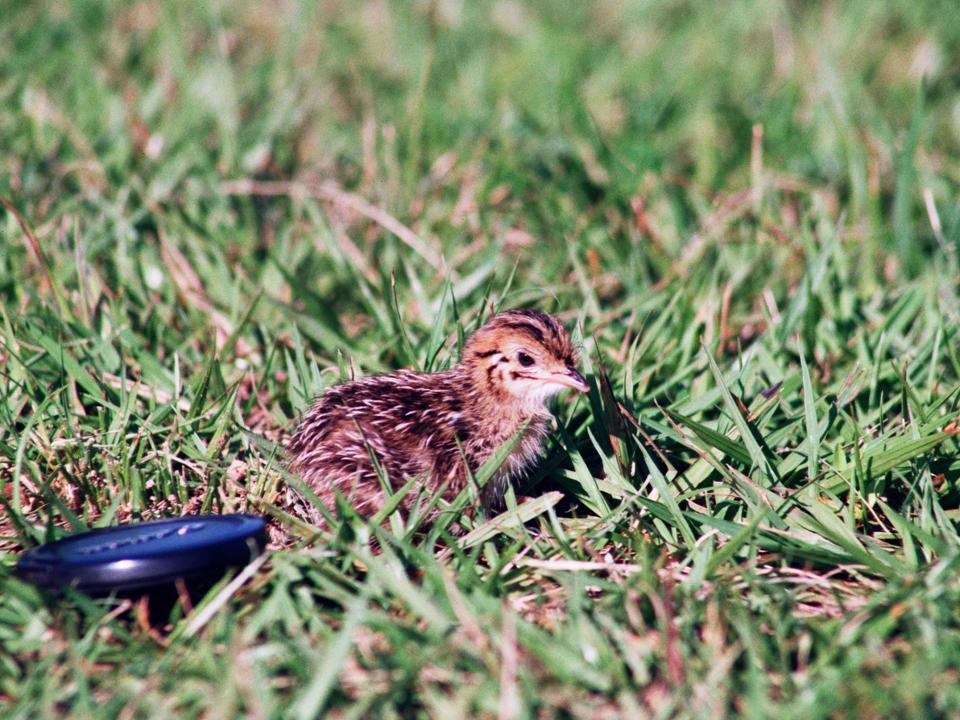
|
|
FIGURE 6
|
|
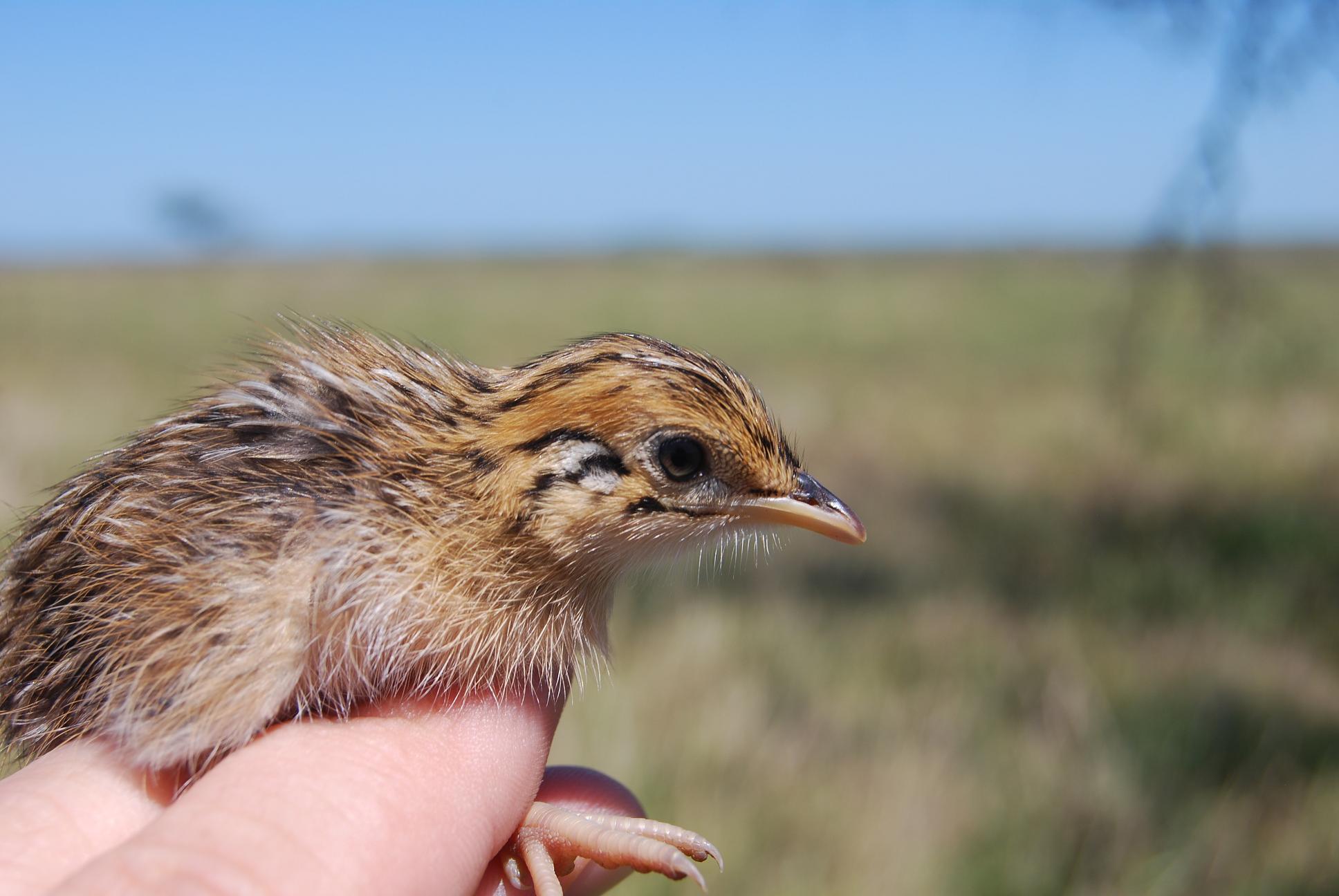
|
|
FIGURE 7
|
|
Nothura maculosa
1 (FPAVE81RE) Call - Estancia Laguna Blanca, Departamento San Pedro (Paul Smith October 2008).
Click the links to hear the calls. Longer versions of this call can be downloaded from the Paraguay page of our partner website Xeno-Canto - the largest collection of freely downloadable Neotropical bird calls available online.
Gallery 2 - Nothura maculosa nest
This common open country tinamou is strongly associated with agricultural areas. Whilst cutting long grass Hans Hostettler discovered this nest on 3 December 2012 at PROCOSARA, San Rafael NP, Departamento Itapúa. Upon returning to the nest later two eggs had been removed a short distance from the nest and one had been damaged, presumably by the parent bird on attempting to move the brood. The eggs were then subsequently abandoned. The nest is a flattened grassy hollow on the ground within tall grass (removed in this case by the mower!). The platform was 153x138mm and the cup 109x93 mm. Four glossy, uniformly dark purplish-brown eggs were present with a shiny, porcelain-like surface. Three of the eggs measured 47.4x33.4mm, 45.2x31.4mm and 48.3x34.4mm respectively, the broken egg not being measured. There was considerable diversity in the size of the eggs, with one egg being noticeably smaller than the others. Hans Hostettler commented that in chickens it is common for the first egg laid in a brood to be smaller than the others. All photos by Paul Smith.
FIGURE 2a - (FPAVE3840PH) Nest with eggs.
FIGURE 2b - (FPAVE3841PH) Eggs close up.
FIGURE 2c - (FPAVE3842PH) Nest cup.
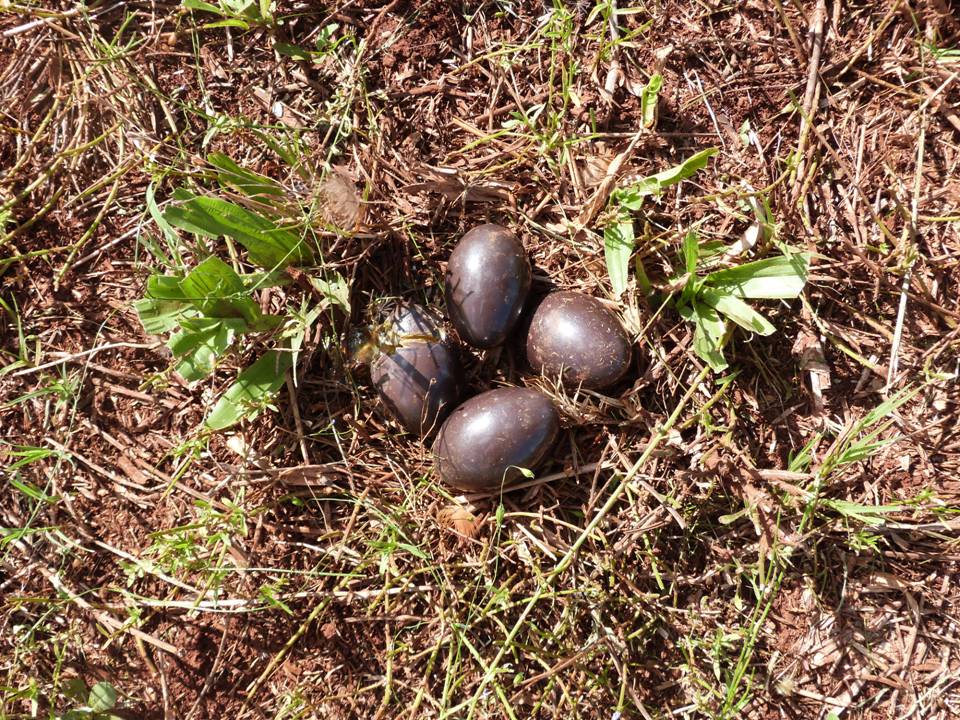
|
|
FIGURE 2a
|
|
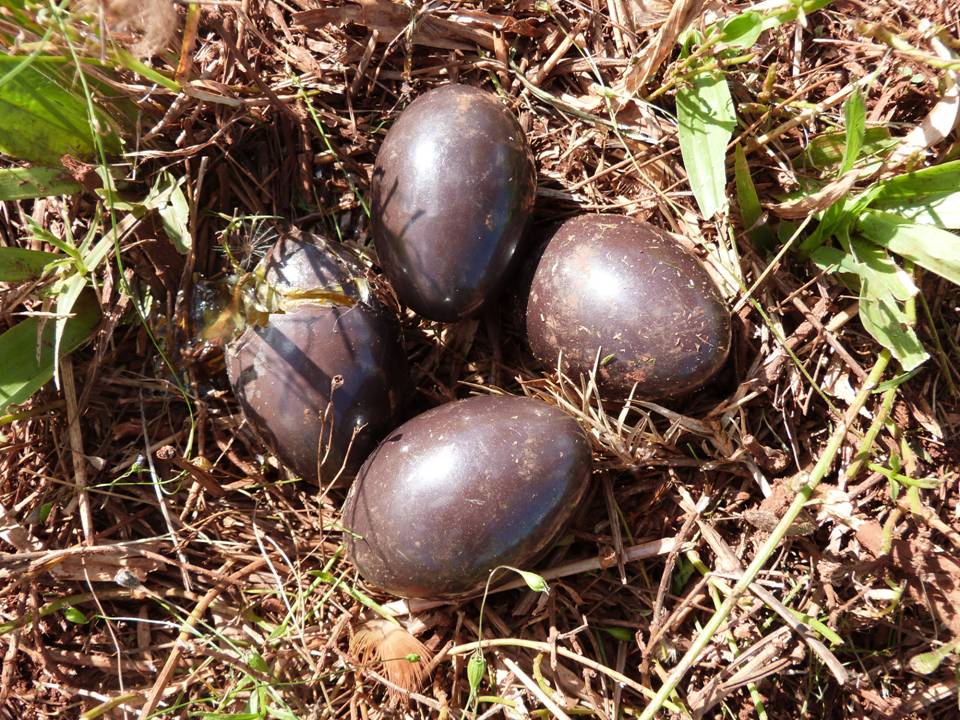
|
|
FIGURE 2b
|
|
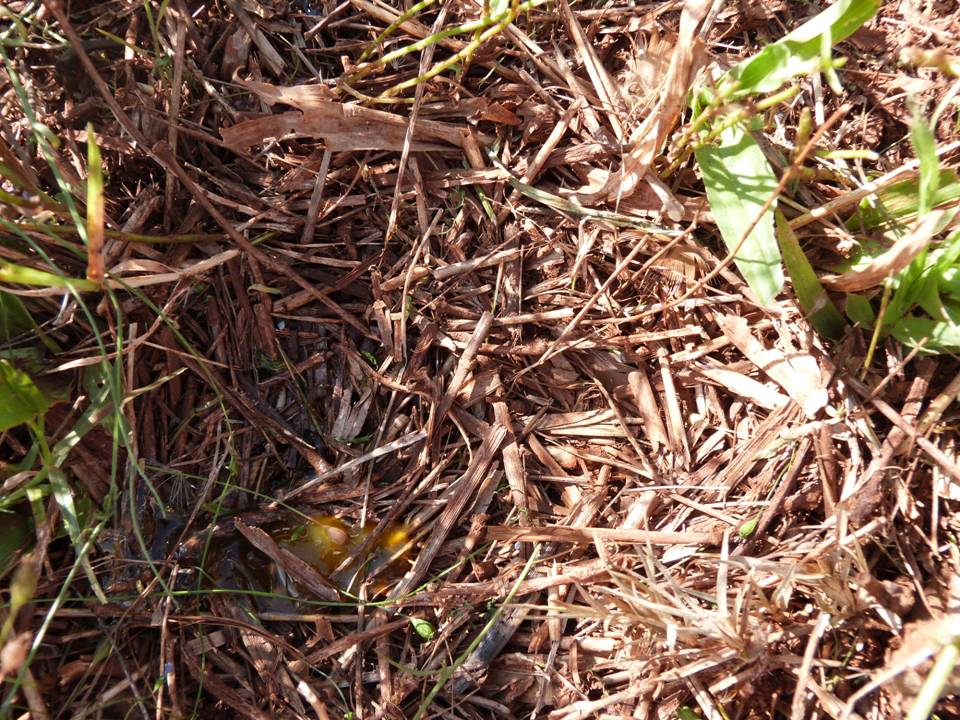
|
|
FIGURE 2c
|
|


